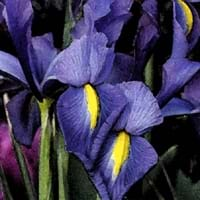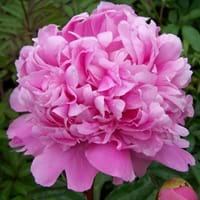Life Span
Perennial
Annual
Type
Herbaceous Perennial
Shrub
Origin
Hybrid origin
China, Japan
Types
Not Available
Not Available
Number of Varieties
Not Available
Habitat
meadows, Riverbanks, Rocky Mountains
Grassland, Woods
USDA Hardiness Zone
5-9
3-9
Sunset Zone
2b, 3a, 3b, 4, 5, 6, 7, 8, 9, 10, 11, 12, 13, 14, 15, 16, 17, 18, 19, 20, 21, 22, 23, 24
A1, A2, A3, 1a, 1b, 2a, 2b, 3a, 3b, 4, 5, 6, 7, 8, 9, 10, 11, 14, 15, 16, 17, 18, 19, 20
Habit
Clump-Forming
Upright/Erect
Flower Color
White, Yellow, Blue, Purple, Orange, Pink, Rose, Coral, Peach, Burgundy, Lavender, Plum, Orange Red, Dark Salmon, Bronze, Chocolate, Black
Light Pink, Pink, White
Flower Color Modifier
Bicolor
Not Applicable
Fruit Color
Not Available
Brown, Brownish Red, Green
Leaf Color in Spring
Green, Light Green, Gray Green
Green, Light Green
Leaf Color in Summer
Yellow green
Red, Green, Light Green
Leaf Color in Fall
Not Available
Red, Green, Light Green
Leaf Color in Winter
Light Green
Green
Leaf Shape
Sword-like
Arrowhead
Plant Season
Spring
Early Fall
Sunlight
Full Sun, Partial Sun
Full Sun, Partial shade
Growth Rate
Medium
Medium
Type of Soil
Clay, Loam, Sand
Loamy, Well drained
The pH of Soil
Acidic, Neutral, Alkaline
Neutral
Soil Drainage
Well drained
Moist
Bloom Time
Early Spring, Spring, Late Spring
Early Summer, Late Spring, Spring, Summer
Tolerances
Drought
Cold climate, Heat Tolerance
Where to Plant?
Ground
Ground, Pot
How to Plant?
Root Plants
Budding
Plant Maintenance
Medium
Medium
Watering Requirements
Average Water Needs
Requires regular watering
In Summer
Lots of watering
Lots of watering
In Spring
Moderate
Moderate
In Winter
Average Water
Average Water
Soil pH
Acidic, Neutral, Alkaline
Neutral
Soil Type
Clay, Loam, Sand
Loam
Soil Drainage Capacity
Well drained
Well drained
Sun Exposure
Full Sun, Partial Sun
Full Sun, Partial Sun
Pruning
Remove damaged leaves, Remove dead branches, Remove dead leaves
Remove damaged leaves, Remove dead branches, Remove dead leaves
Fertilizers
All-Purpose Liquid Fertilizer
All-Purpose Liquid Fertilizer
Pests and Diseases
Bacteria, fungus, Viruses
Botrytis Blight, Nematodes, Ring spot, Stem rot, Verticillium Wilt
Plant Tolerance
Drought
Drought
Flower Petal Number
Single
Not Available
Foliage Texture
Fine
Coarse
Foliage Sheen
Matte
Glossy
Attracts
Butterflies, Hummingbirds
Ants
Allergy
Not Available
Abdominal pain, Avoid during Pregnancy, Stomach pain, Vomiting
Aesthetic Uses
Beautification, Showy Purposes
Landscape Designing, Showy Purposes
Beauty Benefits
Not Available
Not Available
Environmental Uses
Air purification
Air purification
Medicinal Uses
Not Available
Atherosclerosis, Chronic fatigue, Cold, Cough, Gout, Headache, hemorrhoids, Hepatitis, Liver problems, Menstrual Cramps, Muscle Pain, Nerve pain, Osteoarthritis, Premenstrual syndrome, Respiratory Disorders, Treating fever
Part of Plant Used
Flowers, Root
Flowers, Root, Seeds
Other Uses
Basketary, Used for fragrance
Showy Purposes, Traditional medicine, Use in Chinese herbology
Used As Indoor Plant
No
Sometimes
Used As Outdoor Plant
Yes
Yes
Garden Design
Cutflower, Foundation, Mixed Border, Rock Garden, Wall
Cutflower, Feature Plant, Foundation, Mixed Border
Botanical Name
IRIS 'Apollo'
Paonia lactiflora
Common Name
Carmen Iris, Dutch Iris
Chinese Peony
In Hindi
Dutch Iris
Paonia lactiflora
In German
Dutch Iris
Paonia lactiflora
In French
Dutch Iris
Paonia lactiflora
In Spanish
Dutch Iris
lactiflora paonia
In Greek
Dutch Iris
Paonia lactiflora
In Portuguese
Dutch Iris
Paonia lactiflora
In Polish
Dutch Iris
Paonia lactiflora
In Latin
Dutch Iris
Paonia lactiflora
Phylum
Magnoliophyta
Magnoliophyta
Class
Magnoliopsida
Magnoliopsida
Order
Asparagales
Dilleniales
Family
Iridaceae
Paeoniaceae
Clade
Angiosperms, Monocots
Angiosperms, Core eudicots, Eudicots
Tribe
Irideae
Not Available
Subfamily
Iridoideae
Not Available
Season and Care of Dutch Iris and Paeonia Lactiflora
Season and care of Dutch Iris and Paeonia Lactiflora is important to know. While considering everything about Dutch Iris and Paeonia Lactiflora Care, growing season is an essential factor. Dutch Iris season is Spring and Paeonia Lactiflora season is Spring. The type of soil for Dutch Iris is Clay, Loam, Sand and for Paeonia Lactiflora is Loamy, Well drained while the PH of soil for Dutch Iris is Acidic, Neutral, Alkaline and for Paeonia Lactiflora is Neutral.
Dutch Iris and Paeonia Lactiflora Physical Information
Dutch Iris and Paeonia Lactiflora physical information is very important for comparison. Dutch Iris height is 25.40 cm and width 12.70 cm whereas Paeonia Lactiflora height is 91.50 cm and width 91.50 cm. The color specification of Dutch Iris and Paeonia Lactiflora are as follows:
Dutch Iris flower color: White, Yellow, Blue, Purple, Orange, Pink, Rose, Coral, Peach, Burgundy, Lavender, Plum, Orange Red, Dark Salmon, Bronze, Chocolate and Black
Dutch Iris leaf color: Green, Light Green and Gray Green
Paeonia Lactiflora flower color: Light Pink, Pink and White
- Paeonia Lactiflora leaf color: Green, Light Green
Care of Dutch Iris and Paeonia Lactiflora
Care of Dutch Iris and Paeonia Lactiflora include pruning, fertilizers, watering etc. Dutch Iris pruning is done Remove damaged leaves, Remove dead branches and Remove dead leaves and Paeonia Lactiflora pruning is done Remove damaged leaves, Remove dead branches and Remove dead leaves. In summer Dutch Iris needs Lots of watering and in winter, it needs Average Water. Whereas, in summer Paeonia Lactiflora needs Lots of watering and in winter, it needs Average Water.





